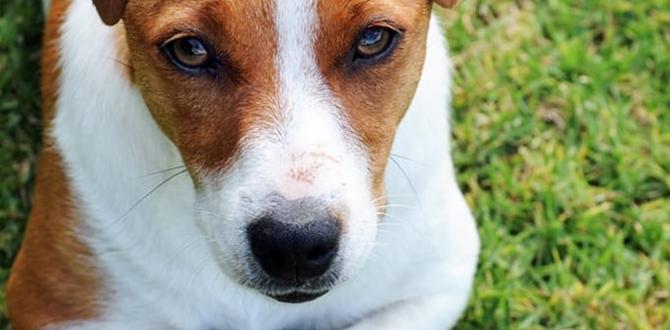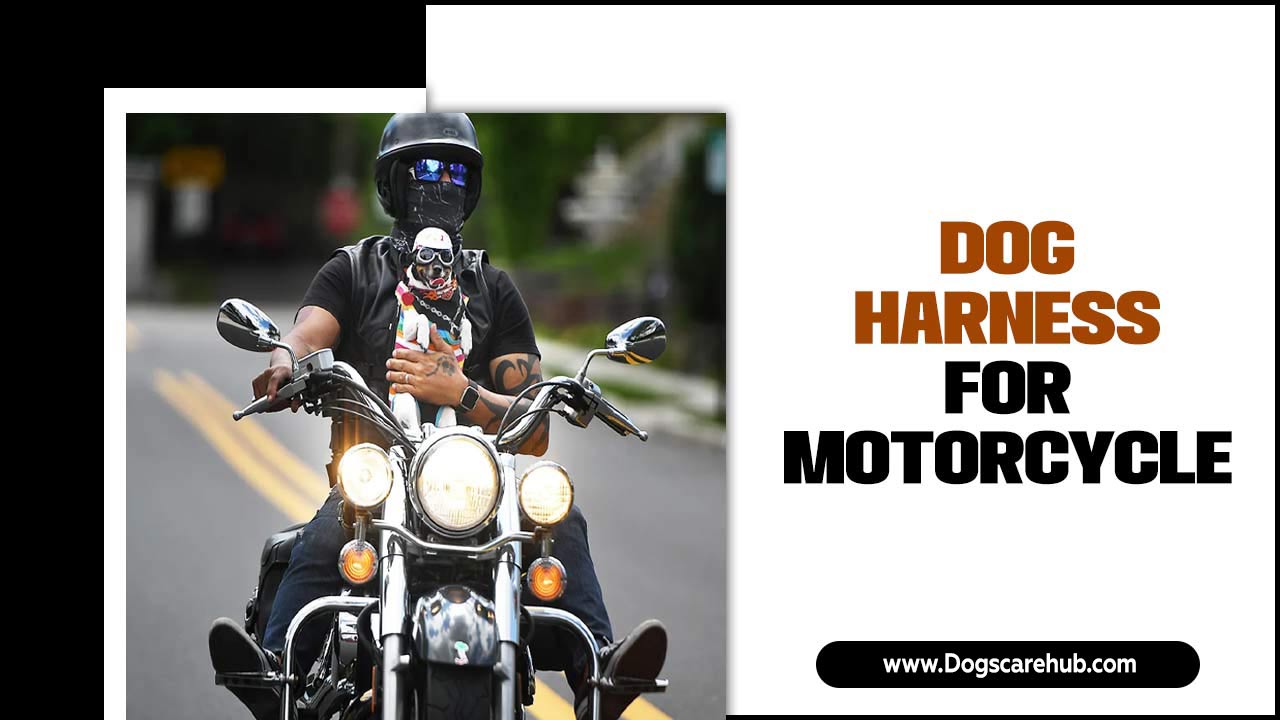Correct dog misbehavior step by step with foundational training and positive reinforcement. Understand your dog’s needs, manage their environment, and consistently apply clear communication to redirect unwanted actions. This guide provides a structured approach to address common issues, fostering a stronger bond and a well-behaved companion.
It can be disheartening when your furry best friend displays behaviors that aren’t quite what you expected. Whether it’s playful nipping that’s a little too hard, jumping on guests, or barking excessively, these moments can leave you feeling frustrated and unsure. You love your dog dearly, and seeing them struggle with certain behaviors, or seeing the confusion or concern in others, is tough. But don’t worry! You’re not alone, and there are effective, kind ways to guide your dog toward better choices. This guide will walk you through a simple, step-by-step process to understand and correct common dog misbehaviors, building trust and a harmonious relationship with your pup.
Understanding Why Dogs Misbehave: The Root of the Problem
Before we dive into correcting misbehavior, it’s crucial to understand that dogs don’t misbehave to be spiteful or to challenge you. Their actions are usually a form of communication or a response to their environment, needs, or training. Think of it like a child acting out – there’s usually an underlying reason for their behavior.
Common Reasons Behind “Misbehavior”:
- Lack of understanding: Your dog simply might not know what you want them to do. This is especially true for puppies or newly adopted dogs who haven’t learned the rules of your home.
- Unmet needs: Basic needs like physical exercise, mental stimulation, social interaction, and a safe space are vital for a dog’s well-being. If these aren’t met, they might resort to destructive chewing, excessive barking, or digging.
- Fear or anxiety: Loud noises, unfamiliar situations, or past negative experiences can trigger fear in dogs, leading to behaviors like hiding, aggression, or house soiling.
- Medical issues: Sometimes, a sudden change in behavior can be a signal that something isn’t right medically. Increased thirst, lethargy, or changes in appetite could be signs of illness. Always consult your veterinarian if you suspect a health problem.
- Attention-seeking: Your dog might have learned that certain behaviors, even negative ones, get them attention from you.
- Boredom: A bored dog is an unhappy dog, and they’ll often find their own entertainment, which might not be what you had in mind.
By addressing the root cause, you can implement more effective and empathetic solutions rather than just punishing the symptom. This foundational understanding is key to correcting dog misbehavior step by step.
The Golden Rules of Correcting Dog Misbehavior
Consistency, patience, and positive reinforcement are the pillars of successful dog training. When you’re working on correcting misbehavior, these principles are your guiding lights.
Key Principles for Success:
- Be Consistent: Everyone in the household needs to be on the same page with training commands and rules. If one person allows jumping and another doesn’t, your dog will be confused.
- Be Patient: Learning takes time. Some dogs pick up cues faster than others. Celebrate small victories and don’t get discouraged by setbacks.
- Positive Reinforcement is Key: Rewarding desired behaviors is far more effective and humane than punishment. This builds a strong bond based on trust and makes training enjoyable for both you and your dog. Punishment, especially in the form of yelling or physical correction, can create fear and anxiety, potentially worsening the behavior or causing new problems.
- Understand Dog Communication: Learn to read your dog’s body language. Subtle cues can tell you if they’re stressed, anxious, or confused.
- Manage the Environment: Sometimes, the easiest way to prevent misbehavior is to set your dog up for success by managing their environment.
These core principles will help frame every step of the correction process. Now, let’s get into the practical steps.
Correct Dog Misbehavior Step by Step: A Practical Plan
Here’s a structured approach to tackle common dog misbehaviors. Remember, this is a journey, and consistency is your best friend!
Step 1: Identify the Misbehavior and Its Trigger
The first step is to clearly define what behavior you want to change. Is your dog chewing furniture? Barking at the mail carrier? Jumping on people?
Once you’ve identified the behavior, try to pinpoint when and why it happens. What was going on right before it occurred? Using a training journal can be incredibly helpful here. Note down:
- Date and time of the incident.
- The specific behavior observed.
- What was happening just before the behavior (e.g., doorbell rang, you left the room, dog was unsupervised).
- Your dog’s body language.
- What you did in response.
Example: If your dog chews your shoes, is it when they’re left alone, or when they’re bored after a long walk? If they bark at visitors, is it the moment the doorbell rings, or when the visitor enters their space?
Step 2: Rule Out Medical Issues
As mentioned, sometimes a change in behavior can stem from a health concern. Before you assume it’s a training issue, a quick vet check is wise, especially for sudden or drastic behavioral changes.
For instance, sudden aggression or increased anxiety could be linked to pain or neurological issues. House-soiling can be a sign of a urinary tract infection or other internal problems. Your veterinarian is the best resource for this initial assessment. The American Veterinary Medical Association (AVMA) offers resources on recognizing signs of illness and when to seek professional help.
Step 3: Manage the Environment to Prevent the Behavior
This is a proactive step that prevents your dog from practicing the unwanted behavior. It’s about setting them up for success.
- For Chewing: If your dog chews furniture, puppy-proof the area. Keep shoes and socks put away. Use gates to block access to rooms when unsupervised. Provide plenty of appropriate chew toys.
- For Jumping: When guests arrive, have your dog on a leash so they can’t jump. Ask guests to ignore your dog until all four paws are on the floor.
- For Excessive Barking: If barking is triggered by windows, use frosted window film or drapes to block the view. If it’s about boredom, ensure plenty of mental and physical exercise.
Management is not a long-term solution, but it’s a crucial temporary measure while you work on training.
Step 4: Teach and Reward the Desired Behavior
This is where positive reinforcement shines. Instead of focusing solely on stopping the “bad” behavior, teach your dog the “good” behavior you want them to exhibit.
- For Jumping: Teach a solid “sit” command. When a guest arrives, ask your dog to sit. Reward them with praise and a small treat for staying in a sit. If they jump, calmly redirect them to sit again.
- For Chewing: Redirect chewing to appropriate toys. When you see your dog chewing a toy, praise them lavishly. If you catch them chewing something they shouldn’t, calmly interrupt, take the item away, and offer an appropriate chew toy, praising them when they take it.
- For Barking: Teach a “quiet” command. When your dog barks, wait for a slight pause, say “Quiet,” and reward them. You can also teach a “speak” command, which gives you more control over barking.
- For excessive energy/boredom behaviors (like digging): Increase physical exercise and provide puzzle toys or training sessions to engage their minds.
The goal is to make the desired behavior more rewarding than the unwanted one.
Step 5: Interrupt and Redirect (When Prevention Fails)
Despite your best management and training efforts, your dog might still engage in unwanted behavior. This is when you need to interrupt and redirect calmly and effectively.
- Calm Interruption: Avoid yelling or harsh scolding. A simple, neutral sound can work. For example, a gentle “oops” or a soft clap.
- Immediate Redirection: As soon as you have their attention, immediately ask them to do something else that is incompatible with the misbehavior.
- Reward the Redirection: If they transition to the desired behavior (e.g., playing with a toy instead of chewing furniture), shower them with praise and a treat.
Example: If your dog starts to bark at the mail carrier, calmly say “Shush” or make a soft noise. As soon as there’s a slight pause, immediately ask them to “Sit” and reward them for sitting and being quiet.
Step 6: Use Positive Consequences to Reinforce Good Choices
Praise, treats, toys, or extra playtime are all positive consequences that reinforce desired behaviors. Make sure your rewards are high-value and given immediately after the desired action.
This process strengthens the association in your dog’s mind: “When I do this (desired behavior), good things happen!”
When to Seek Professional Help
While many common misbehaviors can be managed with consistent training and patience, some situations may require professional intervention. If you’re dealing with:
- Aggression (growling, snapping, biting)
- Severe anxiety or fear-based behaviors
- Destructive behavior that is escalating
- Behaviors that pose a danger to themselves or others
Consulting a certified professional dog trainer (CPDT-KA or CPDT-KSA), a veterinary behaviorist, or a certified applied animal behaviorist (CAAB) can provide tailored guidance and effective strategies. Organizations like the Certification Council for Professional Dog Trainers (CCPDT) can help you find qualified professionals in your area.
Addressing Common Dog Misbehaviors: Specific Scenarios
Let’s apply the step-by-step process to some frequently encountered dog misbehaviors.
Scenario 1: Excessive Barking
Why it happens: Boredom, anxiety, territoriality, attention-seeking, alerting.
Step 1-2: Identify if it’s triggered by specific sounds, people, or being left alone. Rule out medical causes.
Step 3 (Management): Block views from windows, play calming music, ensure your dog has plenty to do.
Step 4 (Teach Desired Behavior): Teach “Quiet.” Greet your dog when they are quiet, and reward. Practice “Speak” on command to gain control.
Step 5 (Interrupt & Redirect): If barking starts, use a gentle interruption. Immediately ask for a “Sit” or “Down” and reward compliance.
Step 6 (Positive Consequences): Reward calm, quiet moments generously.
Scenario 2: Jumping on People
Why it happens: Excitement, seeking attention, greeting behavior.
Step 1-2: Usually happens during greetings. Rule out medical issues (though rare in this case).
Step 3 (Management): Keep your dog on a leash during greetings until they can control themselves. Ask guests to turn away or ignore the dog until they are calm.
Step 4 (Teach Desired Behavior): Teach a solid “Sit” or “Down” command. Practice by having people enter and leave the house, rewarding your dog for staying in their place.
Step 5 (Interrupt & Redirect): If jumping starts, calmly turn your back. Do not engage. Once they are calm and have all four paws on the floor, then greet them.
Step 6 (Positive Consequences): Reward calm greetings with calm attention and occasional treats.
Scenario 3: Destructive Chewing
Why it happens: Teething (puppies), boredom, anxiety, lack of appropriate outlets, exploration.
Step 1-2: Observe when chewing occurs (alone, after exercise, etc.). Rule out dietary deficiencies or dental pain.
Step 3 (Management): Puppy-proof your home. Provide a variety of durable, safe chew toys. Use crates or exercise pens when unsupervised.
Step 4 (Teach Desired Behavior): Introduce appropriate chew toys and make them exciting. Praise your dog for chewing their toys.
Step 5 (Interrupt & Redirect): If you catch them chewing something inappropriate, calmly take it away, say “No” or “Oops,” and immediately give them an acceptable chew toy. Praise them when they engage with the toy.
Step 6 (Positive Consequences): Rotate chew toys to keep them interesting. Reward chewing on their own toys.
Scenario 4: House Soiling (Accidents)
Why it happens: Incomplete house training, medical issues, anxiety, fear, marking territory.
Step 1-2: Note the frequency, location, and timing. Crucially, rule out any urinary tract infections, kidney issues, or other medical problems with your vet. This is paramount.
Step 3 (Management): Supervise your dog closely when they are indoors. Crate training can be very effective for housetraining. Clean up accidents thoroughly with an enzymatic cleaner to eliminate odors that might attract them back to the same spot.
Step 4 (Teach Desired Behavior): Establish a consistent potty schedule. Take your dog out frequently, especially after waking up, after meals, and before bed. Go to the same potty spot outdoors. When they eliminate outside, praise them enthusiastically and offer a high-value treat immediately afterward.
Step 5 (Interrupt & Redirect): If you catch your dog in the act indoors, interrupt them with a sharp, neutral sound (like “Ah-ah!”), scoop them up, and quickly take them outside to their potty spot. If they finish outside, reward them.
Step 6 (Positive Consequences): Make outdoor potty breaks the most rewarding part of your dog’s day. Special treats, lots of praise, and a few minutes of play can work wonders.
For more specific guidance on house-training, resources from university veterinary schools, such as those provided by Cornell University’s College of Veterinary Medicine section on behavioral health, can offer in-depth information.
Tools and Aids for Correcting Misbehavior
Beyond your voice and your hands, a few tools can assist in managing and redirecting behavior. Always use these humanely and as part of a comprehensive training plan.
| Tool | Purpose | How to Use Effectively | Considerations |
|---|---|---|---|
| High-Value Treats | Reinforce desired behaviors, reward quick responses. | Use small, tasty treats (cooked chicken, cheese bits, commercial training treats) that your dog loves. Deliver immediately after the good behavior. | Keep them small to avoid overfeeding. Ensure they are healthy and suitable for your dog. |
| Leash & Collar/Harness | Containment, safety, and physical guidance. | Use for walks, during greetings if jumping is an issue, and for leashed fetches or training sessions. Ensure a proper fit to prevent escape or injury. | Choose a comfortable, well-fitting harness or collar. Never use a leash to yank or punish; it’s for control and safety. |
| Crate or Exercise Pen | Safe confinement, house-training aid, preventing destructive behavior when unsupervised. | Introduce positively. Make it a den-like, safe space with comfortable bedding and toys. Never use as punishment. | Ensure the crate is appropriately sized. Gradual introduction is key for success. |
| Puzzle Toys & Enrichment Feeders | Mental stimulation, reduce boredom, redirect chewing. | Use for meal times or when your dog needs to be occupied. Fill with kibble or treats. | Choose toys appropriate for your dog’s chewing strength and intelligence level. |
Remember, tools are aids, not magic wands. They work best when integrated into a training program focused on positive reinforcement and understanding your dog’s needs.
Building a Stronger Bond Through Training
The process of correcting misbehavior step by step is not just about stopping unwanted actions; it’s a powerful way to deepen the connection between you and your dog. When you take the time to understand your dog, patiently guide them, and reward their efforts, you’re building a foundation of trust and respect.
Your dog learns to rely on you for guidance and learns that they can trust your reactions. This mutual understanding fosters a more harmonious and enjoyable life together. Every positive training session is an opportunity to communicate clearly and build on your relationship. Think of it as ongoing communication that strengthens your teamwork.
Frequently Asked Questions (FAQ)
Q1: How quickly will I see results when correcting misbehavior?
A1: Results vary greatly depending on the dog, the behavior, your consistency, and the methods used. With positive reinforcement and consistent management, you should start to see improvements within a few weeks. Major changes can take months of dedicated effort.
Q2: Am I allowed to scold my dog when they misbehave?
A2: While a firm, sharp “No!” in a neutral tone can be used to interrupt an unwanted behavior, harsh scolding, yelling, or physical punishment are not recommended. They can create fear, anxiety, break trust, and potentially lead to aggression or other behavioral problems. Focus on positive reinforcement and redirection.
Q3: My dog only misbehaves when I’m not around. What should I do?
A3: This often points to separation anxiety or boredom. Management is key here: ensure your dog has plenty of exercise and mental stimulation before you leave, leave them with special toys or puzzle feeders only for when they’re alone, and practice short absences. If severe, professional help from a vet behaviorist is recommended.
Q4: Is it okay to use treats for correcting bad behavior?
A4: Treats are best used for rewarding good behavior, not “correcting” bad behavior directly. When your dog does something right (e.g., sits instead of jumps), that’s when you reward with a treat. If they stop an unwanted behavior, you can reward the immediate pause and redirection to a good behavior.
Q5: My puppy is biting and nipping a lot. How do I stop it?
A5: Puppies explore with their mouths. When they nip too hard during play, yelp “Ouch!” and briefly withdraw attention. If it continues, a short time-out (10-20 seconds) in a quiet spot can teach them that hard bites end the fun. Provide plenty of appropriate chew toys.
Q6: I adopted a dog with a history of unknown misbehavior. Where do I start?
A6: Start with the basics: build trust, establish a routine, and provide ample opportunities for exercise and mental enrichment. Focus on teaching basic commands and rewarding desired behaviors. Management is crucial to prevent rehearsal of old habits. Consulting with a rescue organization or a trainer experienced with rescue dogs can be very helpful.
Conclusion
Correcting dog misbehavior step by step is a rewarding process that strengthens your bond with your canine companion. By understanding their motivations, managing their environment, consistently teaching desired behaviors, and employing positive reinforcement, you can navigate challenging moments with confidence and kindness. Remember that every dog is an individual, and patience is paramount. Celebrate the small victories, learn from setbacks, and enjoy the journey of building a well-behaved, happy, and cherished member of your family. If you ever feel overwhelmed or encounter serious behavioral issues, don’t hesitate to seek guidance from professional dog trainers or veterinary behaviorists. Together, you and your dog can achieve a harmonious and fulfilling life.
Meet Elyse Colburn, the devoted canine companion and storyteller behind the enchanting world of “Tales, Tails, and Adventures Unleashed.” A passionate dog enthusiast with a heart full of paw prints, Elyse Colburn shares heartwarming tales and insightful adventures, celebrating the joy, loyalty, and endless antics that make every dog a true hero. Join Elyse Colburn on this tail-wagging journey, where every post is a love letter to our four-legged friends.






